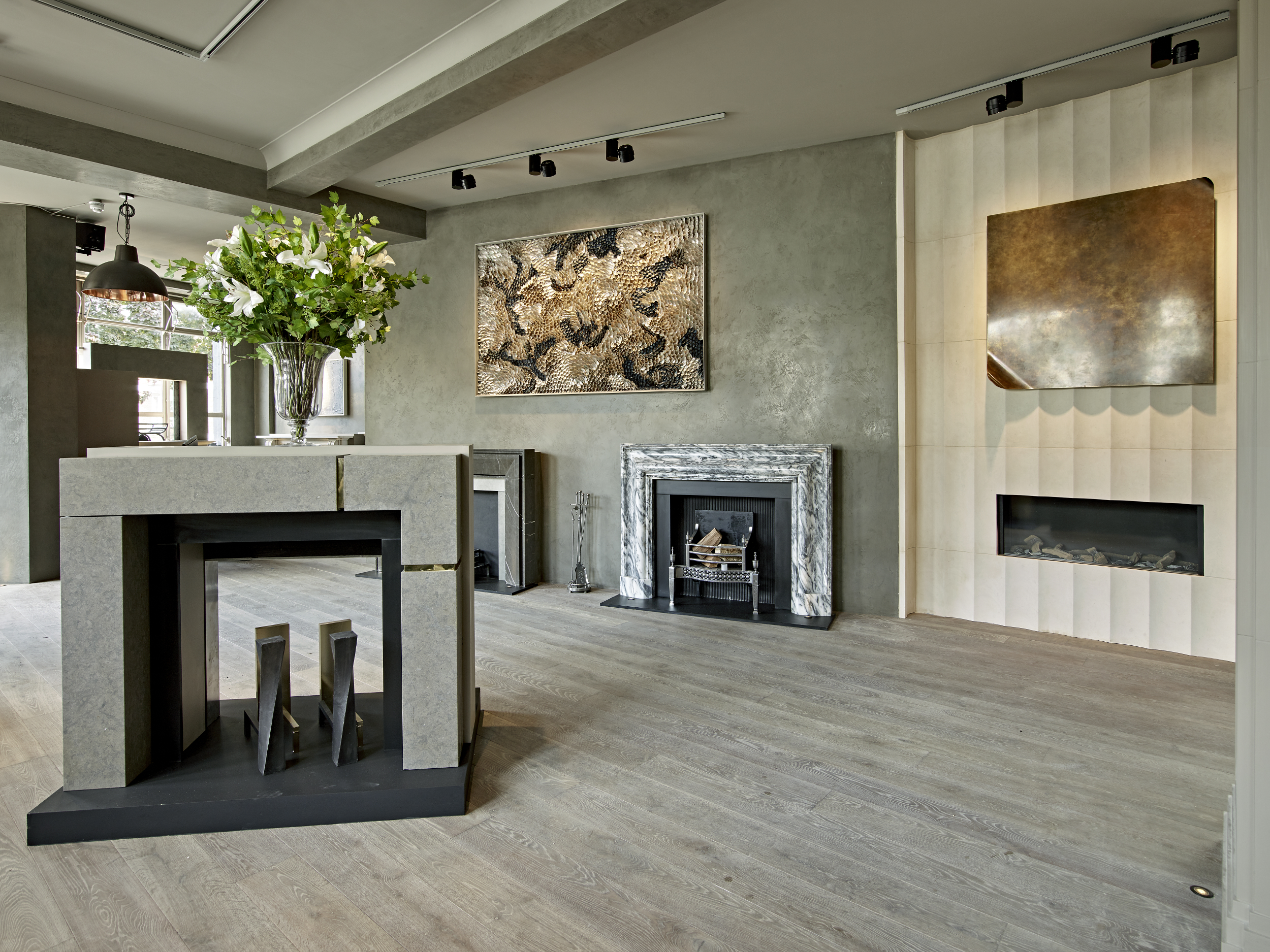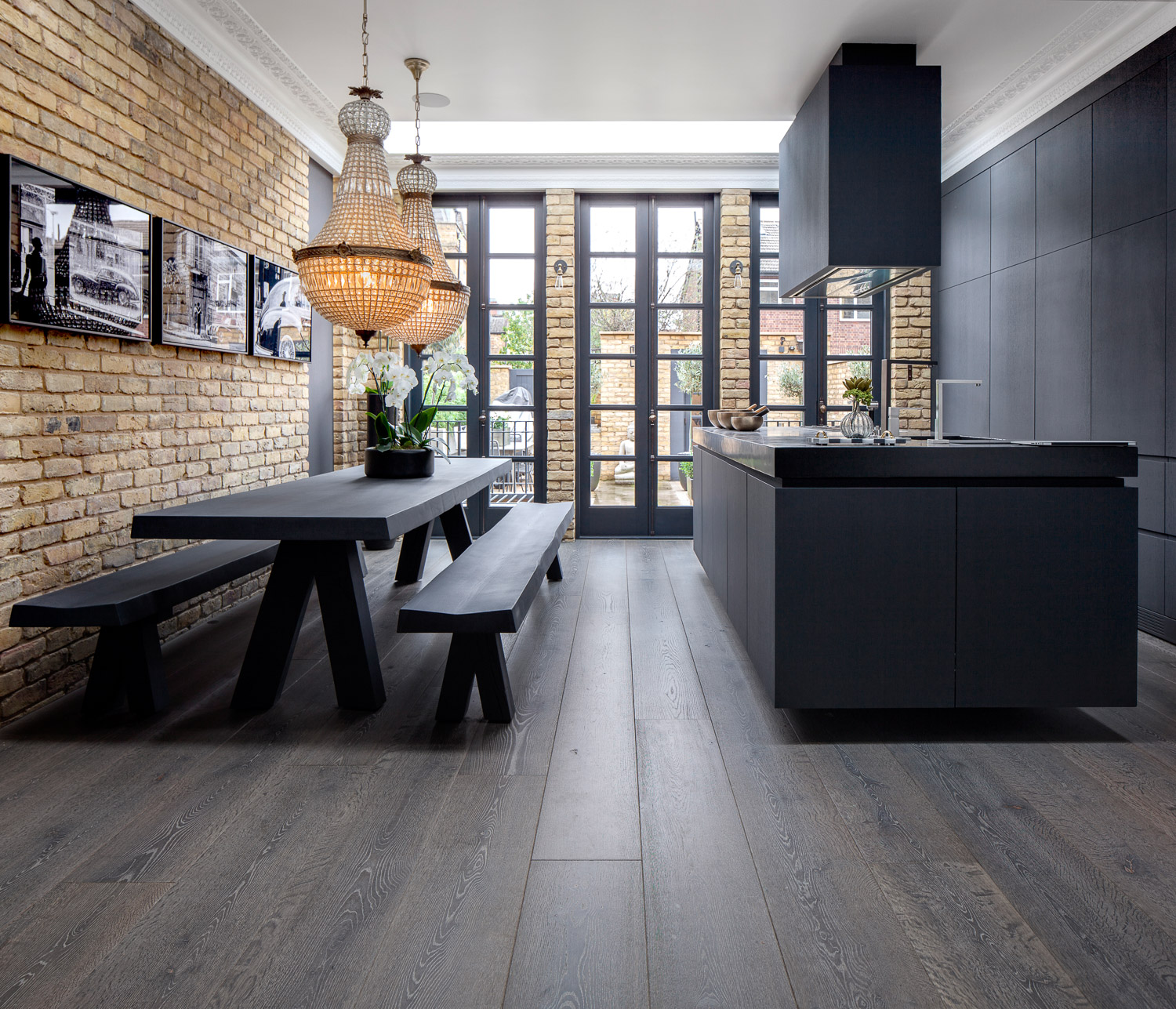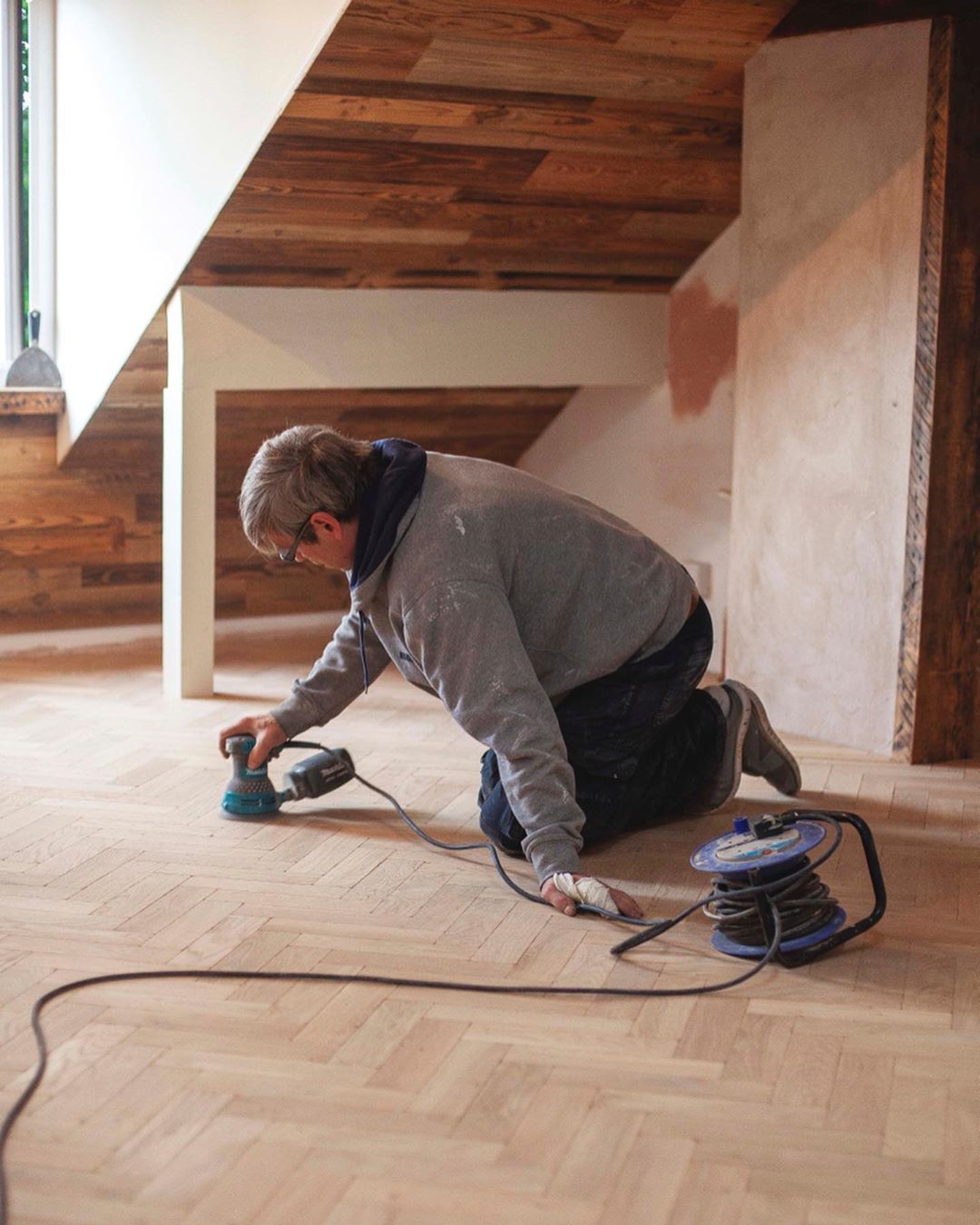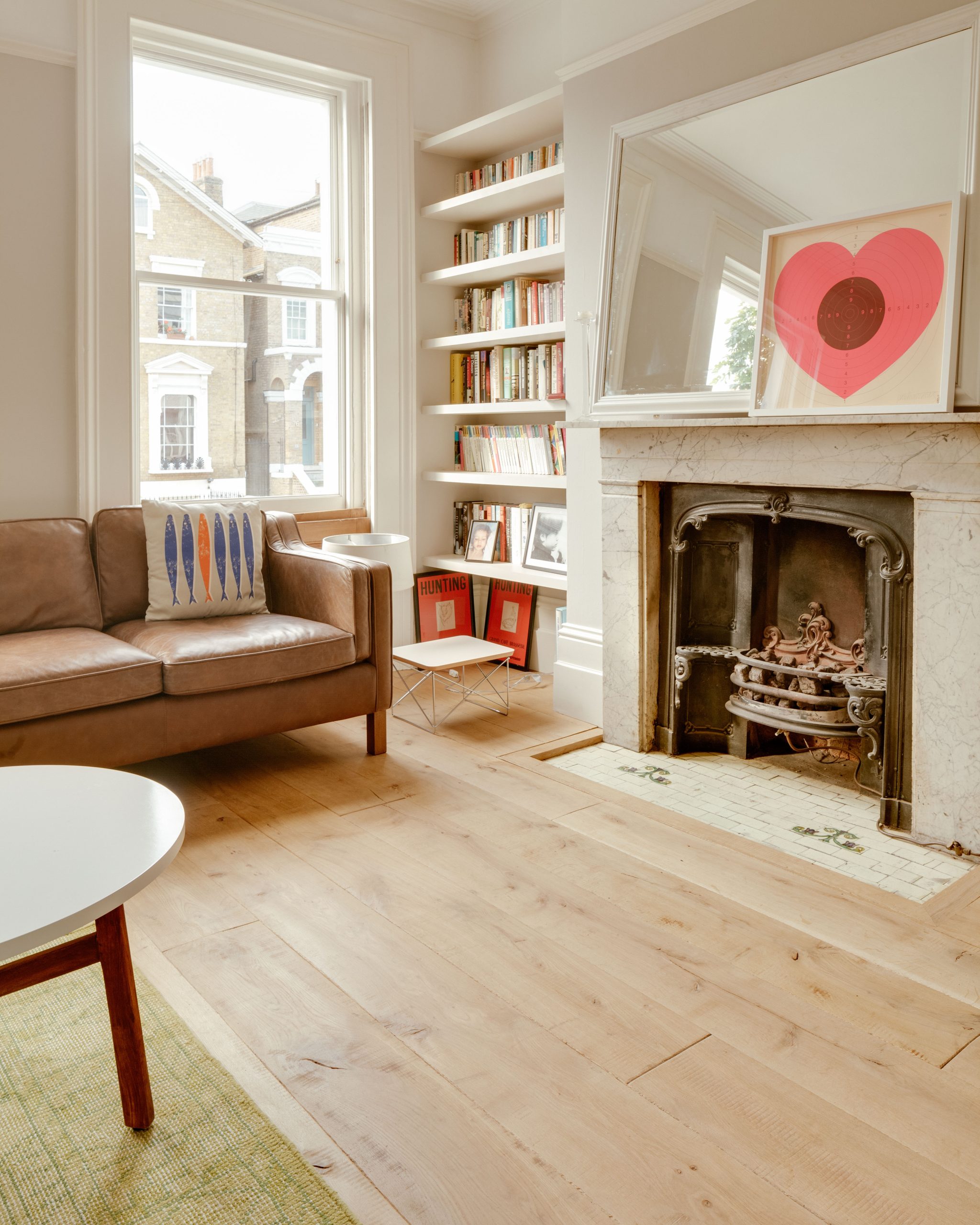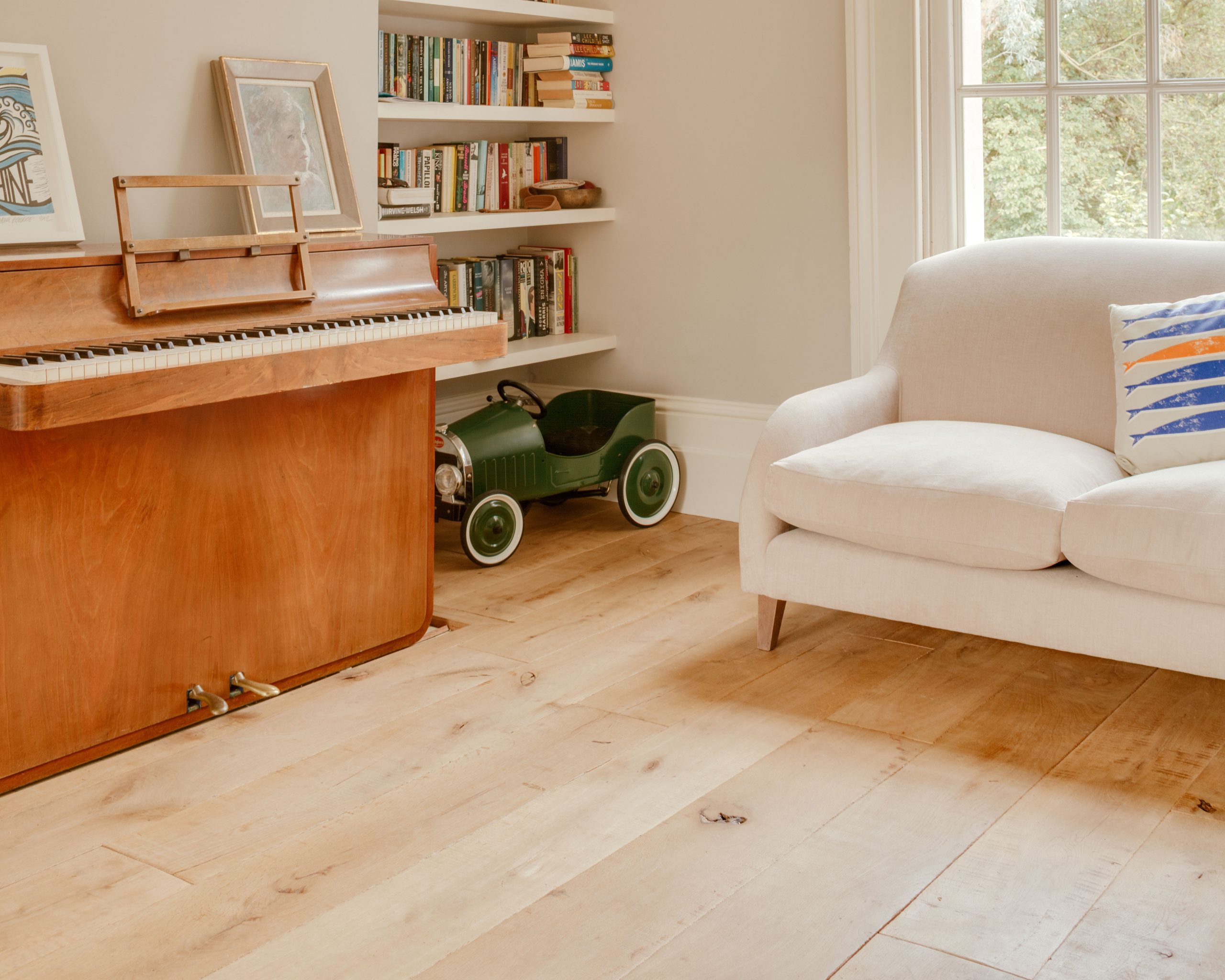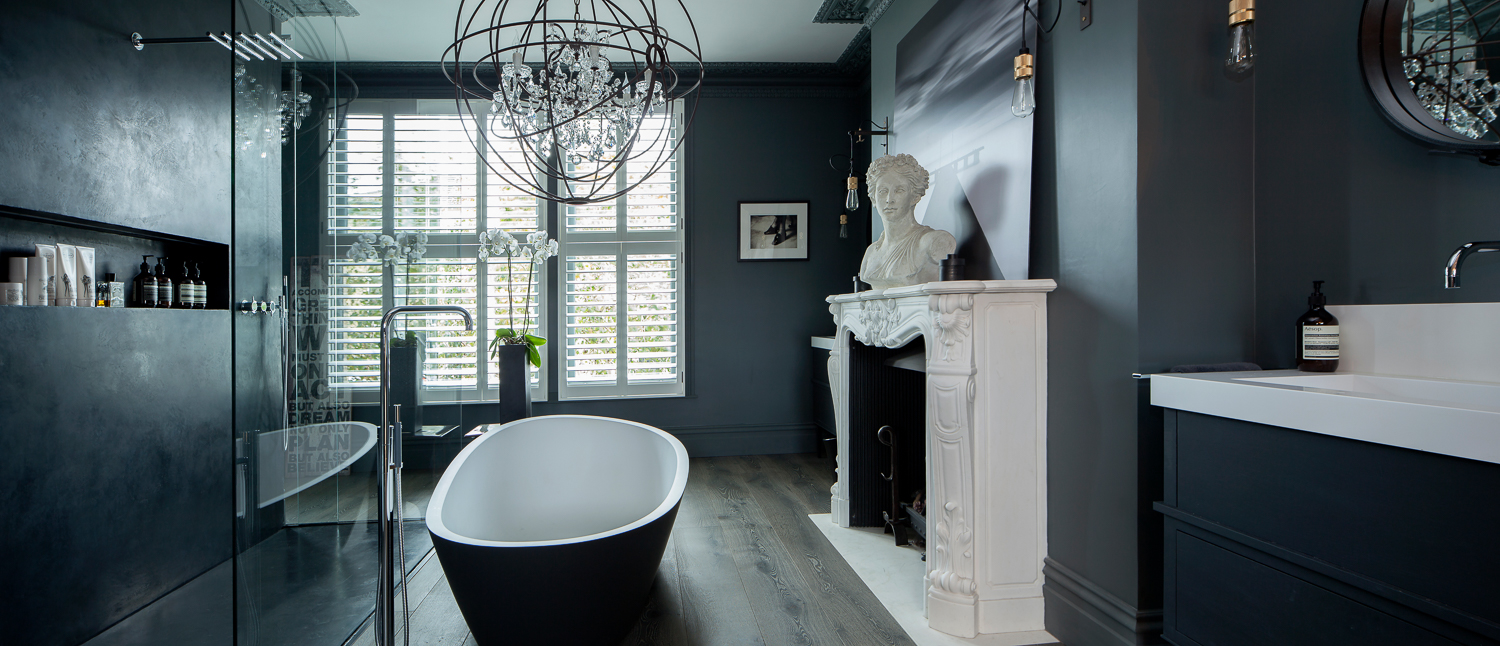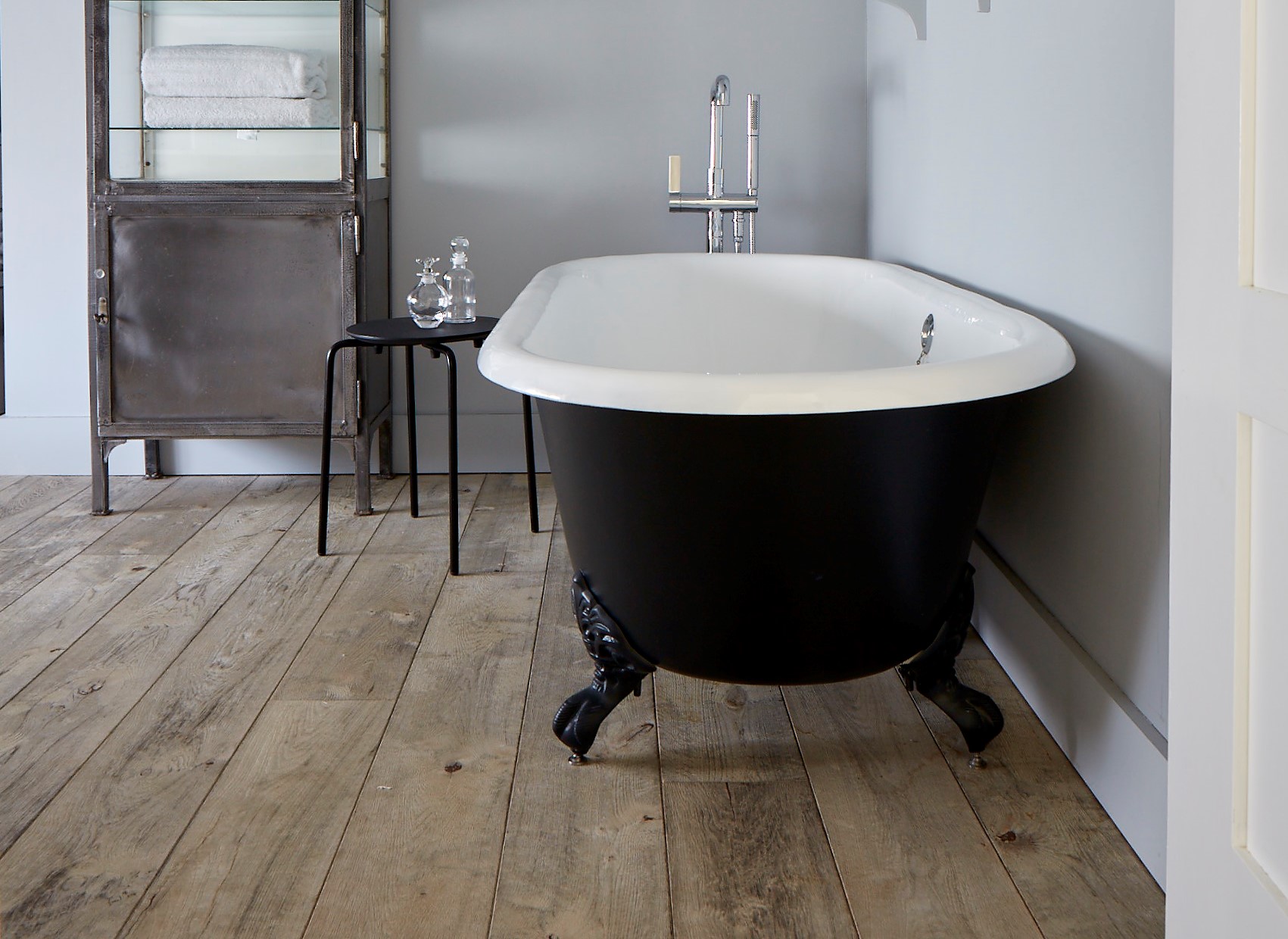
Deciduous trees (those that loose their leaves seasonally) produce hardwood.
These trees are known as angiosperms and any fruits they produce have a hard shell, drop to the ground, and are not air-borne, such as acorns.
The most common hardwood trees are alder, beech, oak, walnut, teak, hickory, walnut, mahogany, maple, and balsa.
The differences in the hardness of the wood can be quite varied for both hardwood and softwood. In most cases hardwood tends to be harder than softwood, but not always.
European Hardwoods
European oak has been a valued wood species for flooring across centuries — greatly associated with history, longevity, steadfastness, durability and strength.
Traditionally, oak was of native origin, but as the population and demand continue to grow, European oak is now mostly sourced from well-managed, sustainable woodlands of Croatia, France and Germany.
Attributes of European Oak
European Mountain oak is exceedingly strong, heavy and durable.
Also, the character within the oak is better distributed throughout the tree because of the steady and regular growing pace of the tree, this makes it a perfect and reliable choice for our floor finishes.
Similar to genuine reclaimed oaks from at least the last century in Europe, slower grown oak has a tighter grain and produces a more stable wood structure.
Only with a significant amount of tannin in the wood can we create our hand-made and custom finishes.
Hardwood Flooring Design Considerations
One of the great things about hardwood flooring is that it captures the beauty of nature — and acts as a connection between interior space and the natural world.
Even better, it’s aesthetic appeal, sturdy construction and ease of cleaning make it a valuable material — and despite numerous shifts and changes in style and design, it has survived the test of trends throughout the years.
The unique properties of hardwood lend a sense of permanence to interiors.
Of course, due to its popularity, it has its own set of special considerations which vary among the various options.
Unique
Offering design flexibility, every plank, board, or strip used on a hardwood floor is unique in a way that fulfils different tastes and preferences.
There are different species and exotic hardwoods, each with its own particular grain, hue, and characteristics, offering diversity in almost any interior setting.
Granted, installation of hardwood flooring is a one-of-a-kind feature that’s unmatched.
Character
Its appeal in design and construction is a natural one, as of course, over time wood is going to change.
It will acquire subtle shadings of colour, and pick up small scratches, nicks, dents and other beautiful imperfections that give the floor an authentically antique look and feel.
That is the kind of unique character that brings an added layer of personality and can only be attained over the course of years.
Sustainability
The demand for environmentally-responsible solutions is on the rise, and more and more end clients require some sort of sustainability certification.
Rightfully so, as the type of hardwood that’s grown in an ecologically viable way creates a very low environmental impact and offers high-quality flooring.
There are many different measures of sustainability for timber, ranging from schemes such as Forest Stewardship Council (FSC), that promotes environmentally responsible forestry practices.
Durability
Material durability is another thing to consider, and hardwood oak flooring has a reputation for being very long-lasting.
Flooring that is kiln-dried, manufactured, installed and finished to certain standards can be sanded down and refinished multiple times without losing structural integrity.
Solid Hardwood VS Engineered Hardwood
Engineered hardwood flooring is constructed in a thin layer of hardwood veneer on top of multiple layers of different woods, known as ply layers.
The choice between engineered or solid wood flooring usually depends on many factors including, how you want the flooring to be fitted, condition of your sub-floor and what factors are important to you (e.g. ability to sand & refinish, height of floor), cost, and of course, how well the flooring might best benefit a project. Of course, the answer is “it depends”.
Advantages of solid hardwood flooring include:
- Because it is solid through and through, it can be sanded and refinished several times over the lifetime of the floor.
- Thick flooring layers hold up well over time and offer a solid feel underfoot.
- As might be expected, sound transmission is better than engineered hardwood.
- Normally sold unfinished, so can be stained in any colour desired.
- Solid hardwood is often offered in an extense variety of platforms and sizes.
Advantages of engineered hardwood flooring include:
- Extremely dimensionally stable especially when adhered to a concrete subfloor.
- Its layered construction makes it less likely to expand, contract or shift when exposed to moisture, humidity and temperature changes.
- A better option in rooms that are subject to frequent or extreme moisture content (below-grade installations like basements) or over concrete slab and radiant heating sources or systems.
- Offers multiple installation options: nails and glue, as well as lock & fold technology.
- Generally sold prefinished.
Hardwood VS Laminate Wood Flooring
- Unlike solid or engineered hardwood where no two boards are the same, laminate flooring pre-designed patterns that imitate the look of wood texture means repetition is unavoidable and on average, every 5 boards look identical.
- The life expectancy for laminate is about 2 to 15 years, but hardwood can last a lifetime (100 years or more) depending on its maintenance and care.
- The damaged laminate boards would need to be completely replaced as they cannot be sanded or refinished.
- Hardwood floors are 100% natural, both can be disposed (or recycled) without any damage to the environment. The same cannot be said for laminate wood flooring.
- All wood naturally contains levels of formaldehyde, known to be a human carcinogen in hight levels. Laminate flooring tends to have more than Hardwood.
Conclusion
Hardwood flooring has been the most popular type of flooring for decades, and transcends both time and style changes. When you consider its overall lifespan and high-performance, engineered and solid wood flooring is a wiser, healthier and environmentally conscious option. It’s construction, colour and texture assortment, coupled with high dimensional stability, easy to maintain and longevity, it offers undeniable decades of both functionality and timeless beauty.


